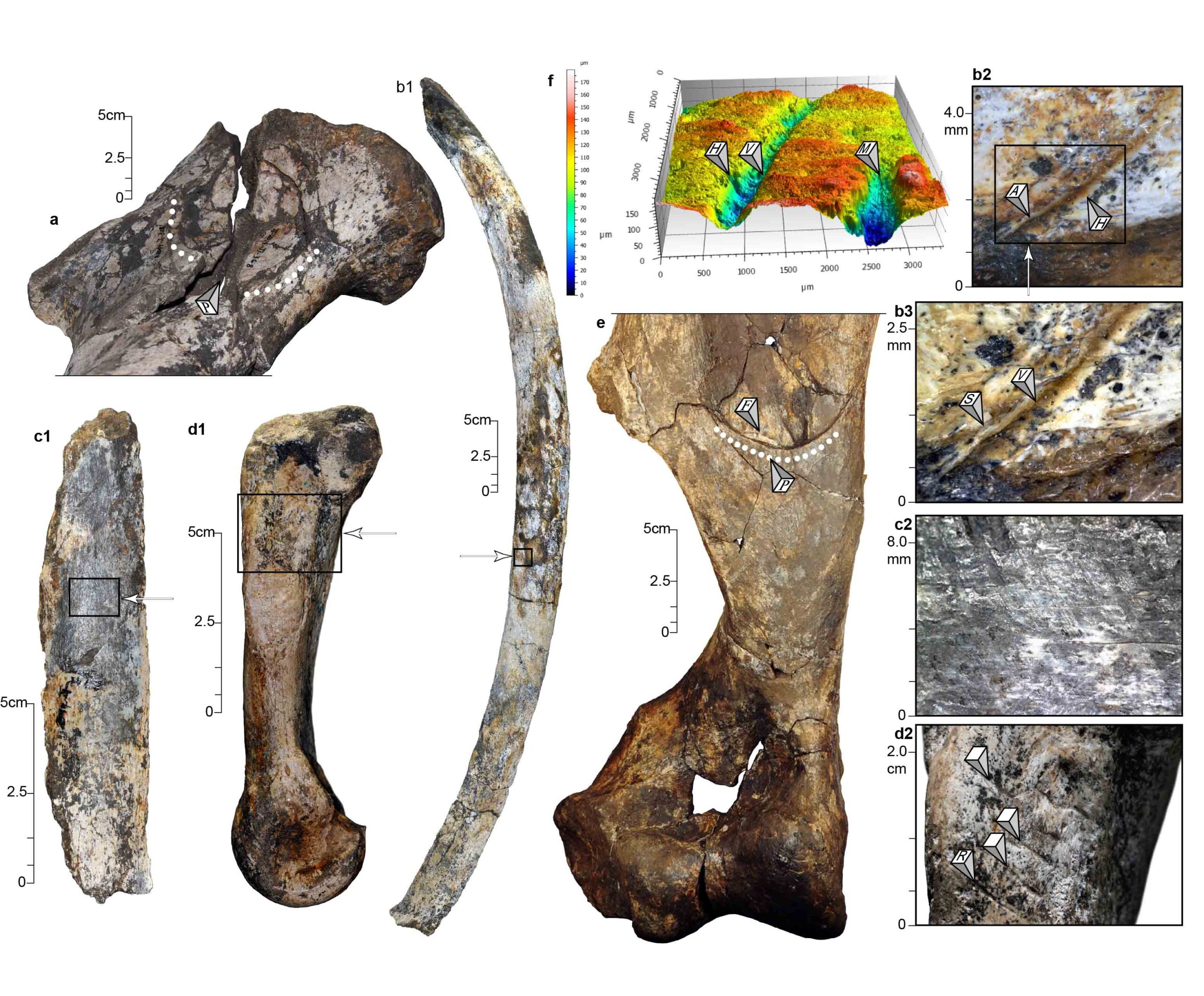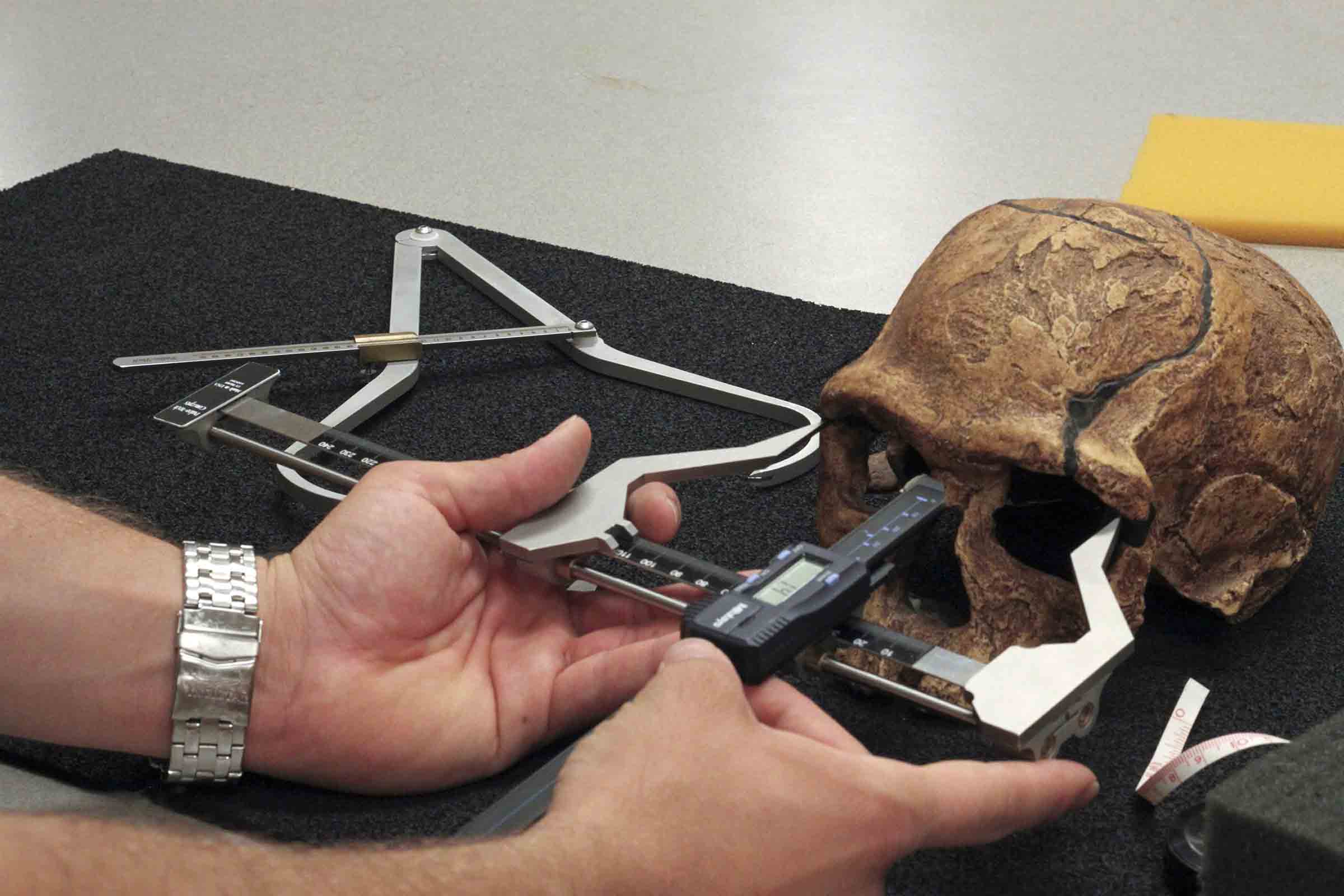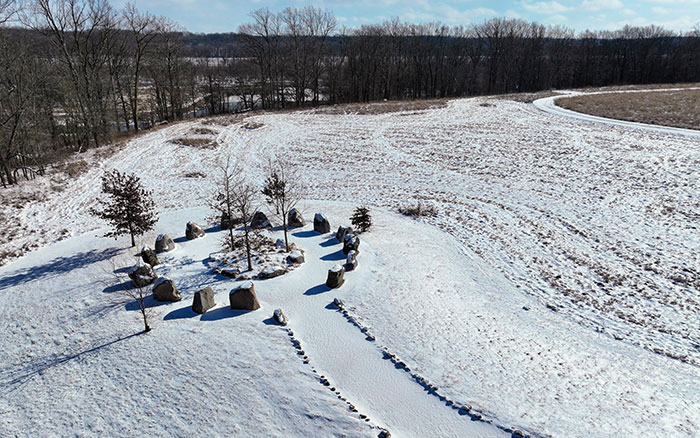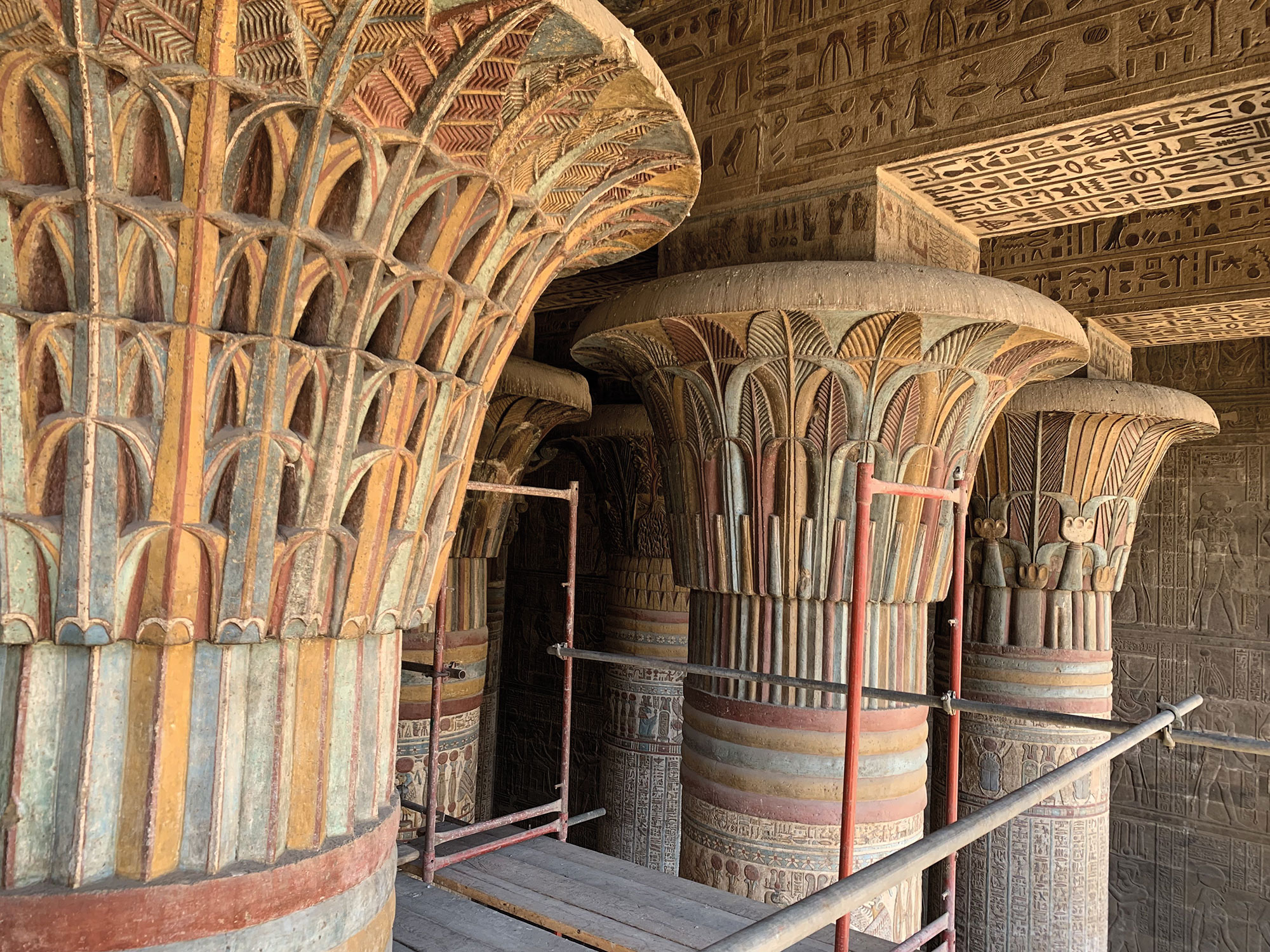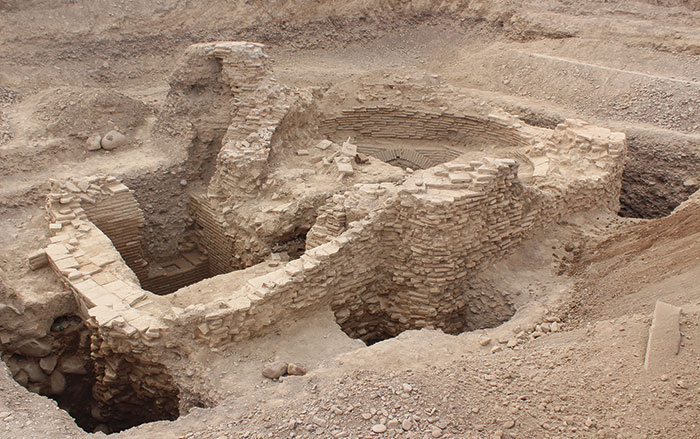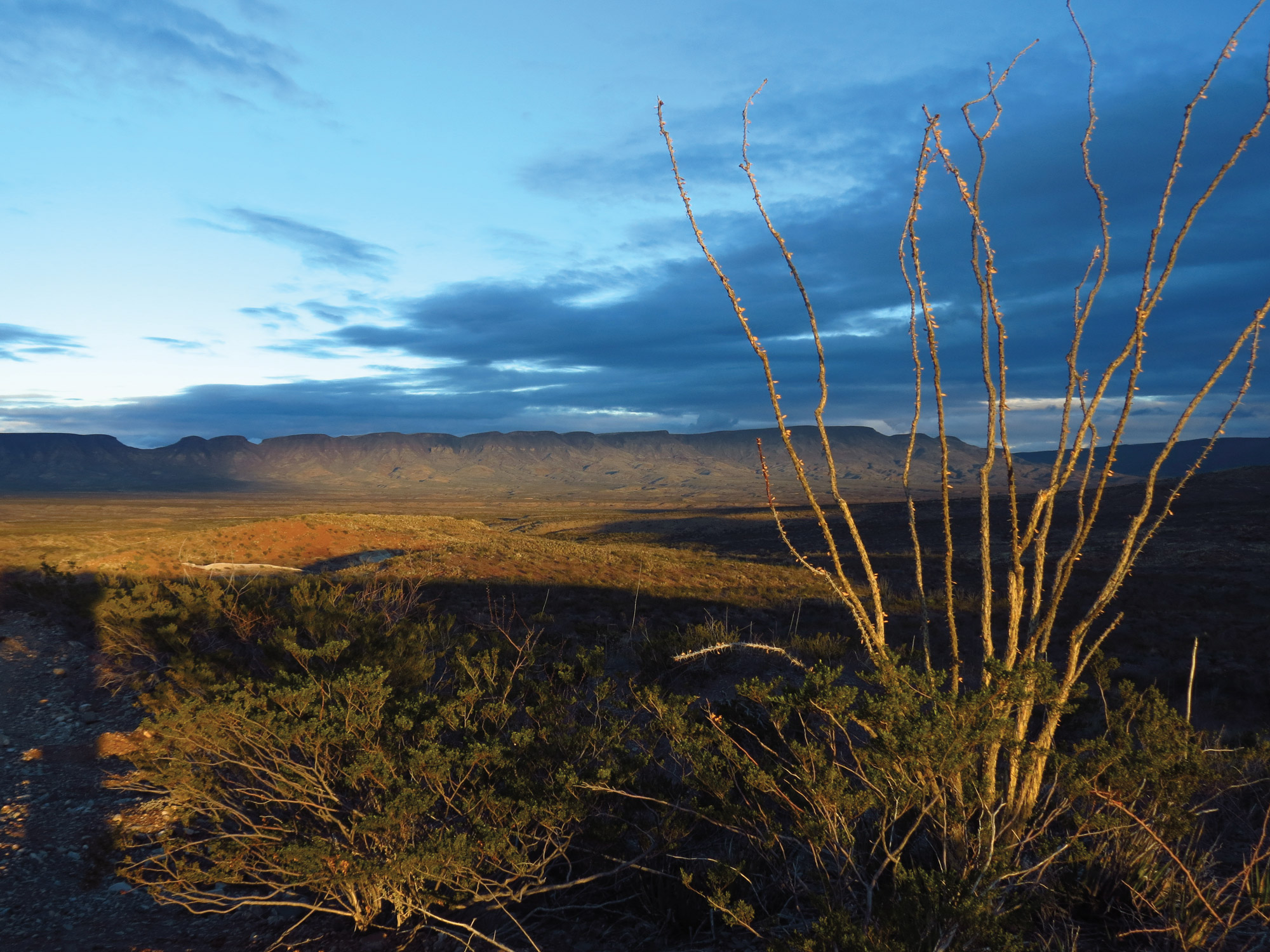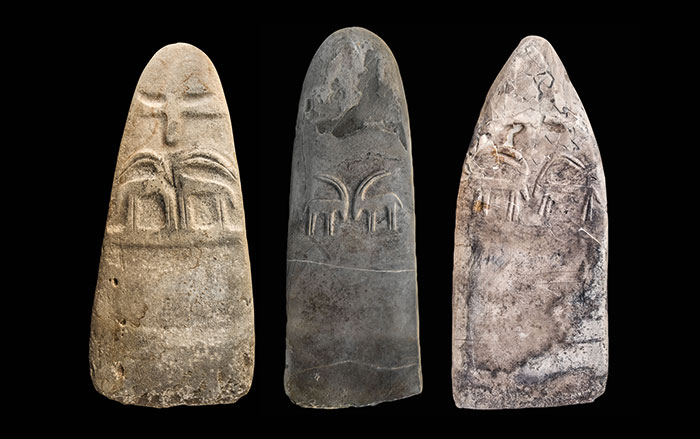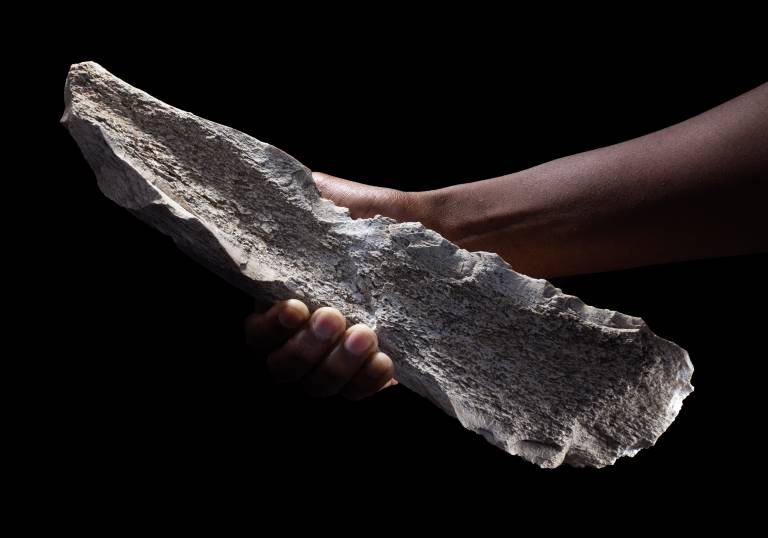
OLDUVAI GORGE, TANZANIA—According to a statement released by University College London, a collection of 27 fossilized bone artifacts made by hominins in Olduvai Gorge 1.5 million years ago represents the oldest known systematic production of bone tools. The objects, which were fashioned out of the limbs of large mammals such as hippos and elephants, may have been used to process animal carcasses into food. Although early human ancestors first began to make stone tools during the Oldowan age, which stretched from 2.7 million years ago to 1.7 million years, it was previously thought that toolmaking with bone material only began to develop around 500,000 years ago. The hominins who created the recently discovered bone objects did so by a process called knapping, in which small flakes are chipped away to create a sharpened edge. This is the same method used to manufacture stone tools. The transfer of technique from stone to bone indicates a sophisticated knowledge of toolmaking and shows that their creators possessed a greater cognitive ability than experts once thought. “We were excited to find these bone tools from such an early time frame,” says UCL archaeologist Renata F. Peters. “It means that human ancestors were capable of transferring skills from stone to bone, a level of complex cognition that we haven’t seen elsewhere for another million years.” Researchers are still unsure exactly who made these items, as no human remains were found at the site. They note, however, that two early hominin species, Homo erectus and Paranthropus boisei, inhabited the region. Read the original scholarly article about this research in Nature. To read about an 800,000-year-old bone point unearthed in Olduvai Gorge, go to "The Bone Collector."




